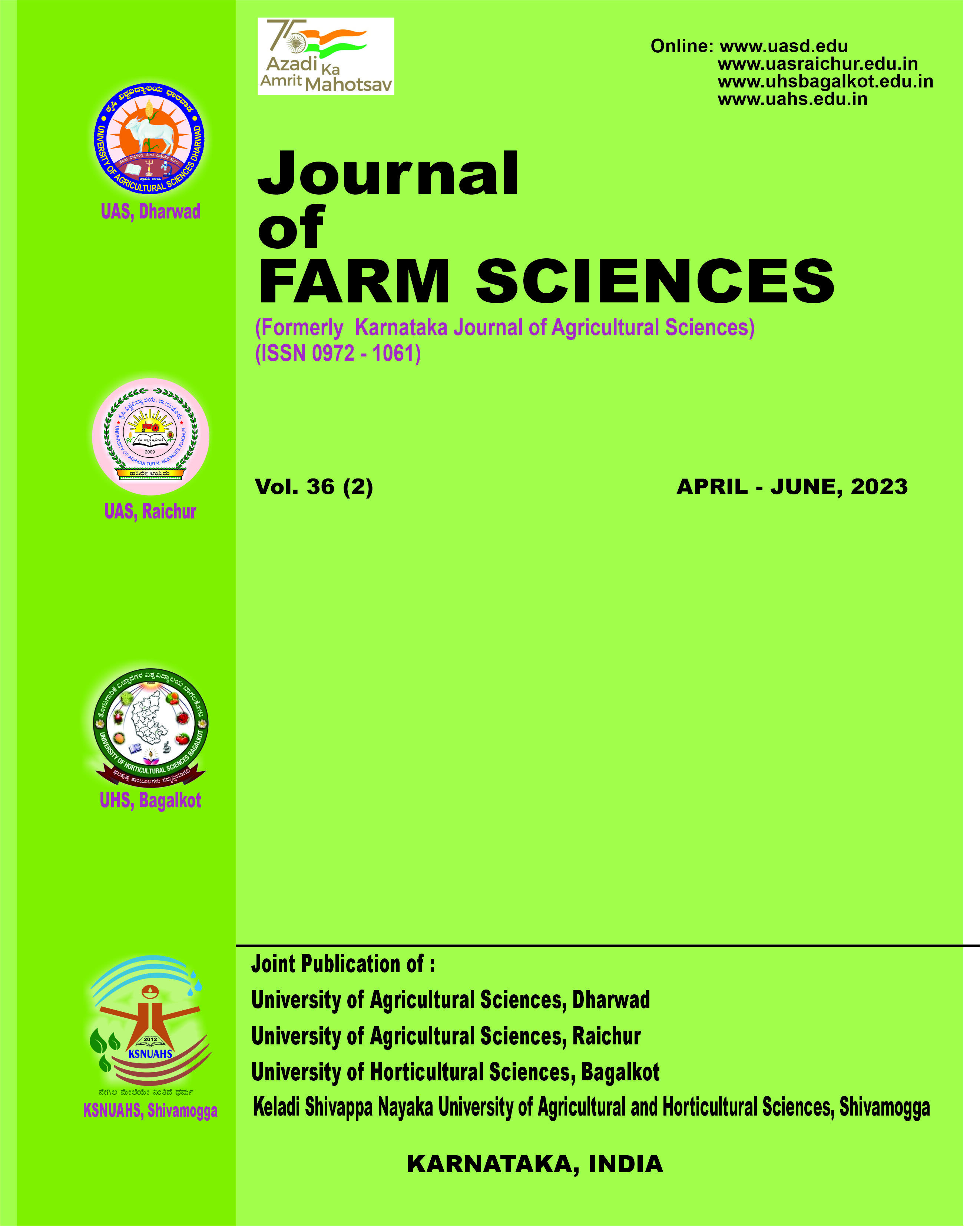Genetically potential sesame (Sesamum indicum L.) breeding lines
Keywords:
Breeding line, Genetic advance, Genetic variability, Heritability
Abstract
Ninety six advanced breeding lines of sesame were evaluated during kharif 2018 for assessing the geneticpotential of breeding lines with regard to yield and it’s component traits. Analysis of variance revealed highly significantdifferences among genotypes for all the ten characters. High genotypic coefficient of variation (GCV) and phenotypiccoefficient of variation (PCV) were observed for number of capsules per plant followed by seed yield per plant while it wasmoderate for plant height, height to first capsule and number of branches per plant. On the other hand, days to 50 per centflowering, day to maturity, capsule length, 1000 seed weight and oil content showed low genotypic and phenotypiccoefficient of variation. High heritability and genetic advance as per cent mean was observed for seed yield per plant,number of capsules per plant and height to first capsule where as moderate heritability with high genetic advance as per centover mean was observed for number of branches per plant. Character such as 1000 seed weight showed high heritability andlow genetic advance as per cent over mean. Moderate heritability with moderate genetic advance as per cent over mean forplant height, capsule length and moderate heritability with low genetic advance as per cent over mean for days to 50 per centflowering, days to maturity and oil content was observed.
Published
2020-09-24
How to Cite
., H., & PARAMESHWARAPPA, S. G. (2020). Genetically potential sesame (Sesamum indicum L.) breeding lines. Journal of Farm Sciences, 33(03), 302-305. https://doi.org/10.61475/jfm.v33i03.224
Section
Research Article
Copyright (c) 2020 Journal of Farm Sciences

This work is licensed under a Creative Commons Attribution-NonCommercial-NoDerivatives 4.0 International License.


